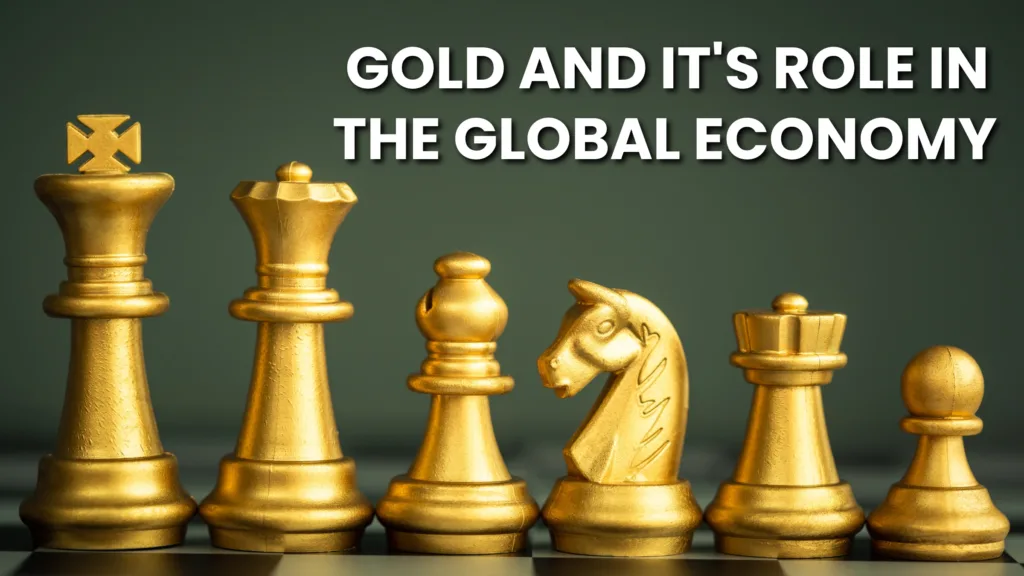
Gold, an esteemed metallic element, possesses a lustrous quality and commands a high market value.
So, why overlook the potential investment opportunities it offers?
Gold is not merely a status symbol; it serves as a financial instrument that could pave the way for the financial independence you seek. But why is it so crucial?
Let’s delve into that!
The Significance of Gold in the Global Economy:
It has consistently held a pivotal role in the global economy, symbolizing wealth and functioning as a valuable financial asset.
Its significance extends beyond its visual appeal, playing a vital role in the economy for centuries.
But Why does the yellow metal maintain such economic value?
Beyond its aesthetic allure, gold is deemed a safe haven asset.
During times of economic uncertainty, it has long been acknowledged as a secure investment. In both physical and digital forms, it provides a sense of security and stability when traditional financial markets experience downturns.
Why is it Considered a Safe Haven Asset?
Investing in gold during a recession or economic crisis serves as a hedge against rising inflation. Unlike fiat currencies, gold tends to retain or increase in value during periods of high inflation, making it an attractive option for investors seeking wealth protection.
Examining historical market movements, noteworthy instances include:
- 1980: Gold attains a new high due to the Soviet intervention in Afghanistan.
- 2003: Gold rises as investors turn to it as risk insurance for portfolios.
- 2006: Gold prices peak amid a weak dollar and escalating tensions over Iran’s nuclear ambitions.
- 2008: Gold records its highest single-day gain at the onset of the global financial crisis.
These examples demonstrate gold’s resilience during crises, making it a valuable asset to consider for your investment portfolio.
Central Banks and Gold – The Untold Love Story:

Central banks play a significant role in influencing global markets and investor sentiment towards gold through their gold holdings.
Increased central bank gold holdings signal confidence, leading to heightened investor demand and, consequently, rising prices. Conversely, selling off reserves can flood the market with supply, potentially causing a decrease in prices.
Curious about which country boasts the largest gold reserves? It’s the USA, followed by Germany, Italy, France, Russia, China, Switzerland, Japan, India, and Turkey.
Now, let’s explore the intricate relationship between Gold and the US Dollar.
US Dollar and Gold – A Cat Fight that never stops!!
The price of gold typically moves inversely to the strength of the US dollar. A robust dollar tends to lower gold prices, while a weaker dollar often results in higher gold prices.
In 2022, the surge in inflation led to increased costs and a depreciation of the US dollar. Investors, wary of inflation and a potential recession, consequently witnessed a rise in gold prices in 2023.
Final Note:
Gold holds various connections with economies, central banks, and currencies, each with its own nuances. It serves as a predictor of broader economic trends, evident in the sharp rise of gold prices during the 2008 financial crisis.
While not everything that glitters is gold, in the commodities market, the brighter gold shines, the more indicative it is of economic troubles. Therefore, when navigating the commodities market, keeping a vigilant eye on gold is essential.
Commodity Samachar
Learn and Trade with Ease
Also Read: Economic Data: ECB Conference and US-China Trade Balances In Spotlight? , Silver Ascending: Will It’s Rise Continue?
Recommended Read: Forex News Letter: Will Jerome Powell Brew Up A Storm?
Want help on your traders?
Chat with our Analyst